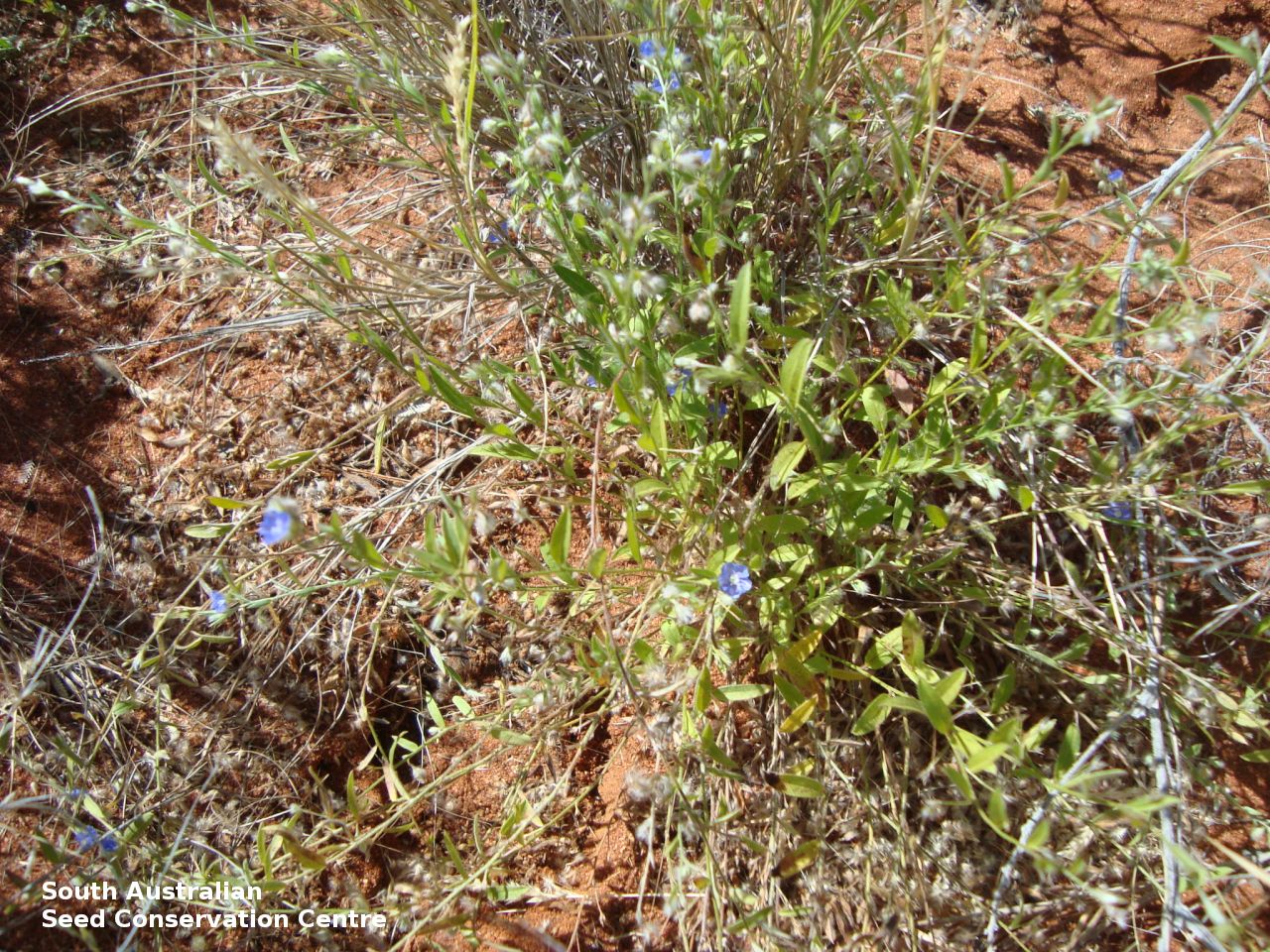
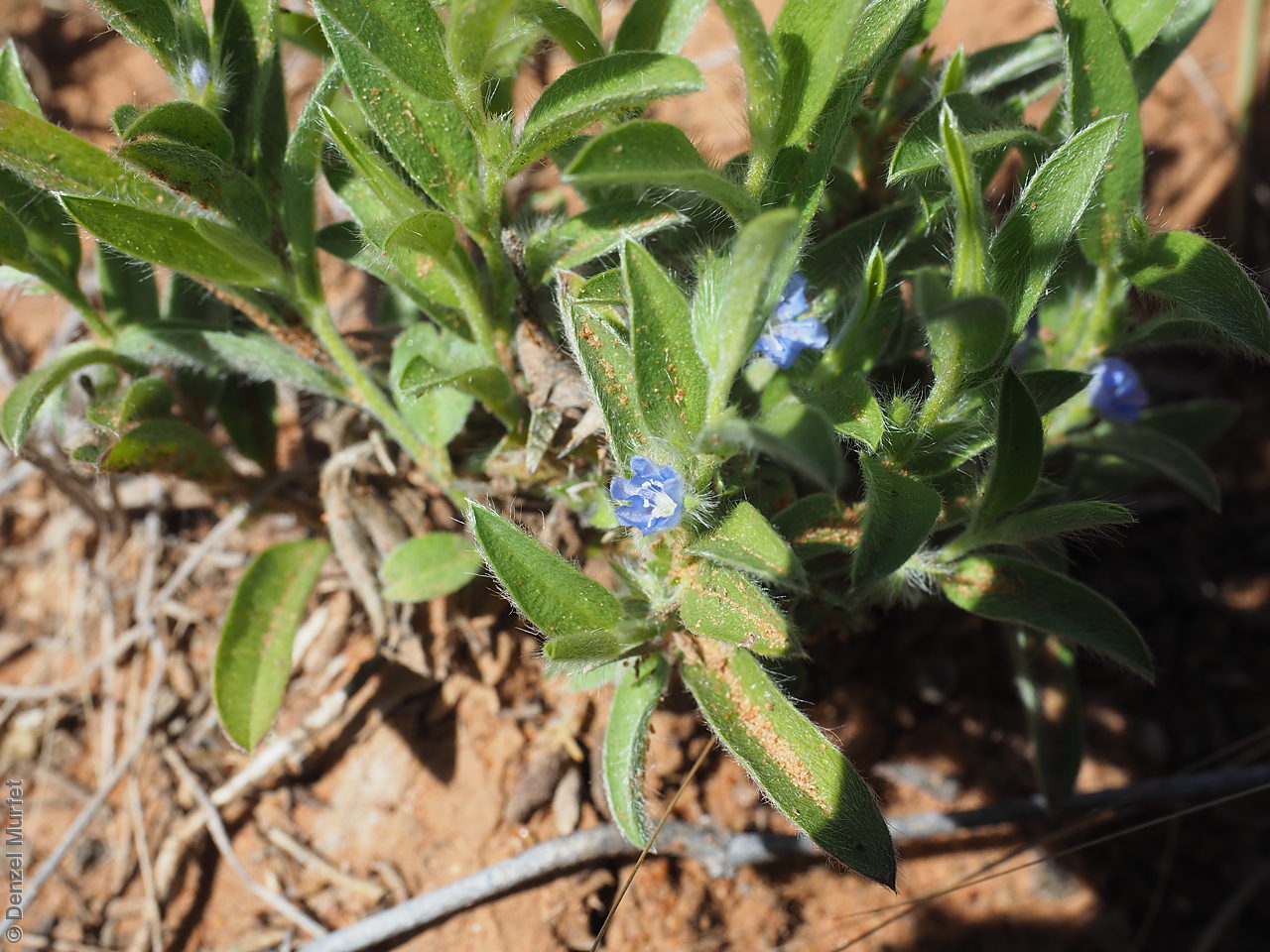
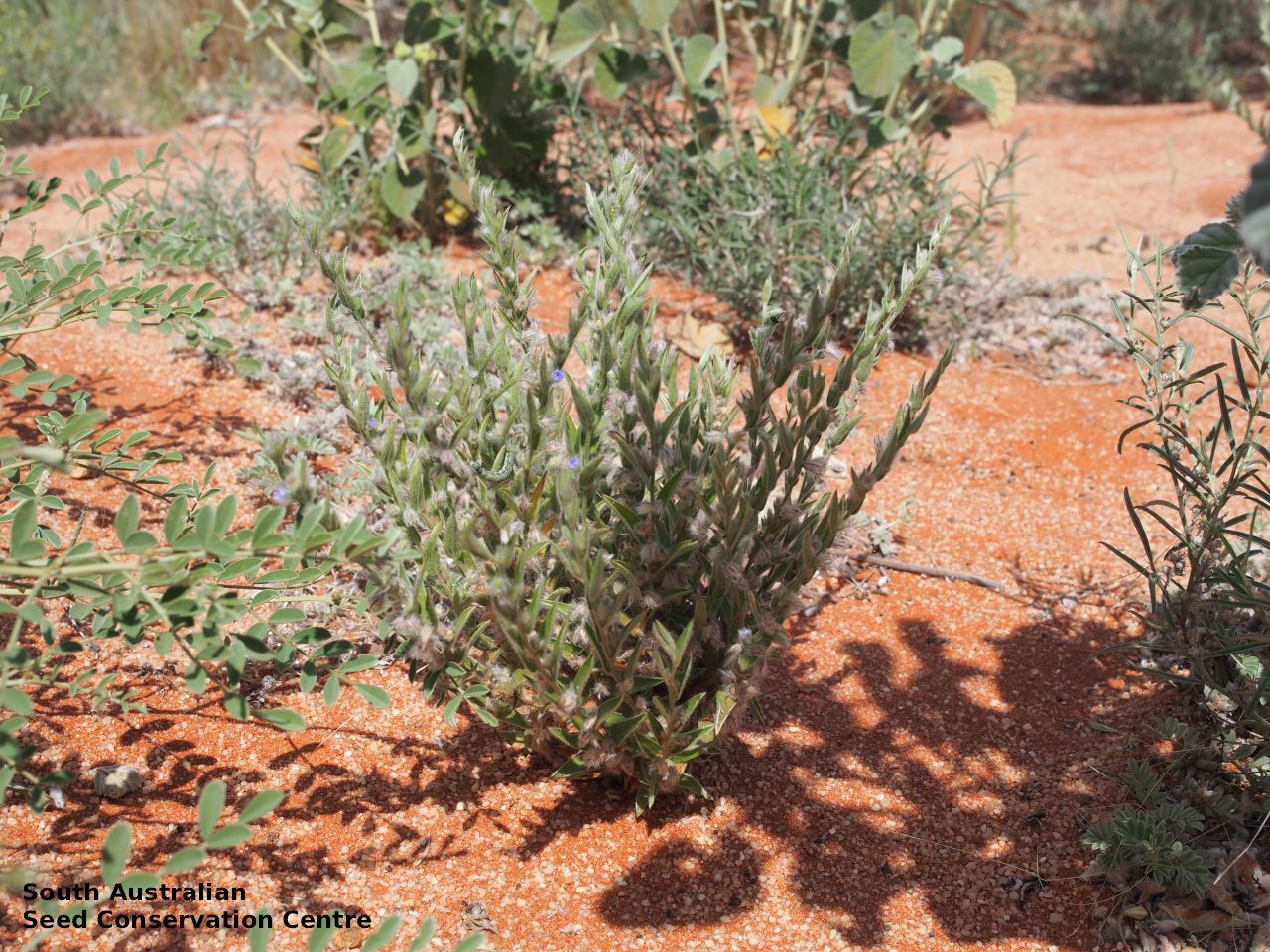
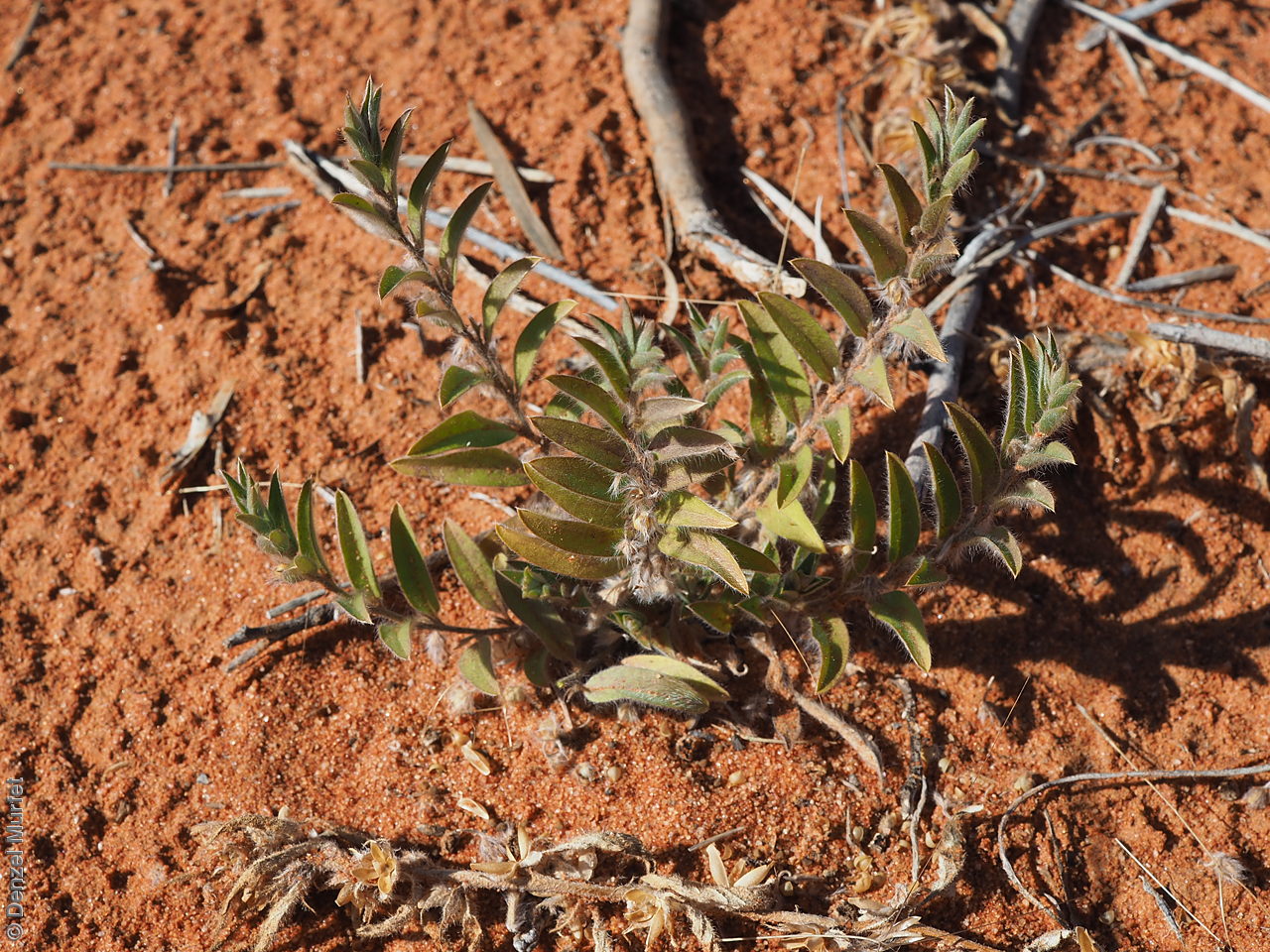
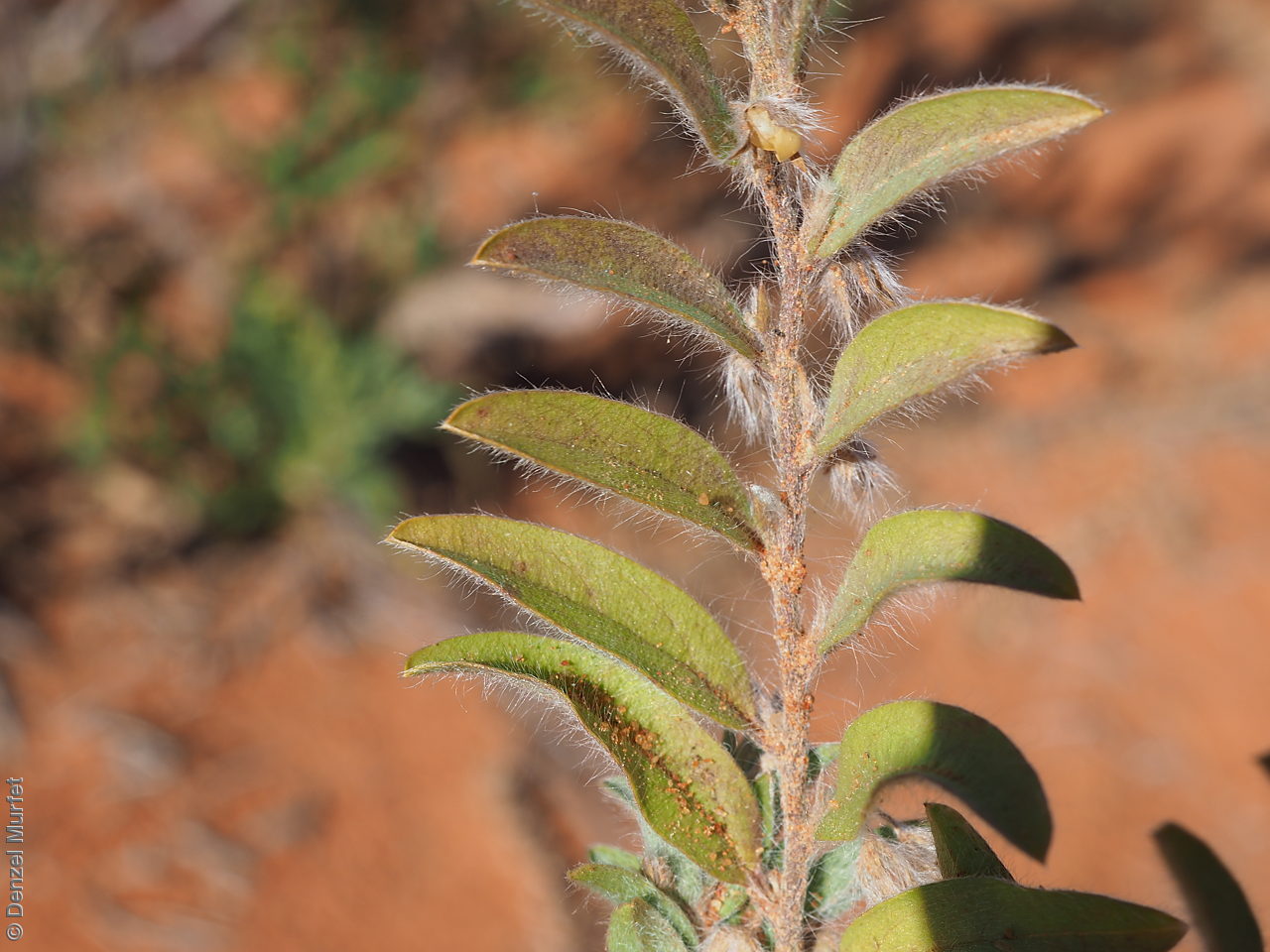
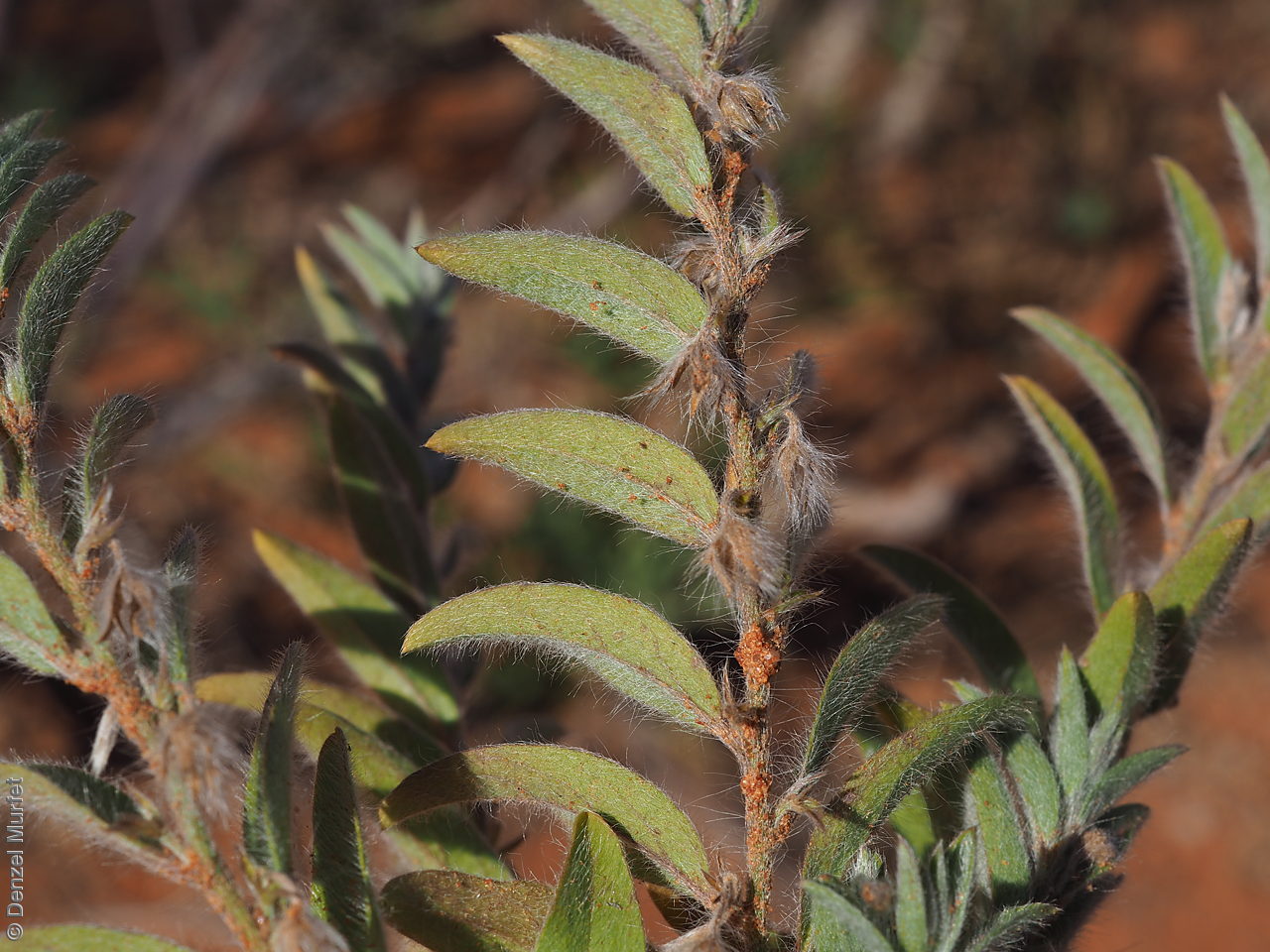
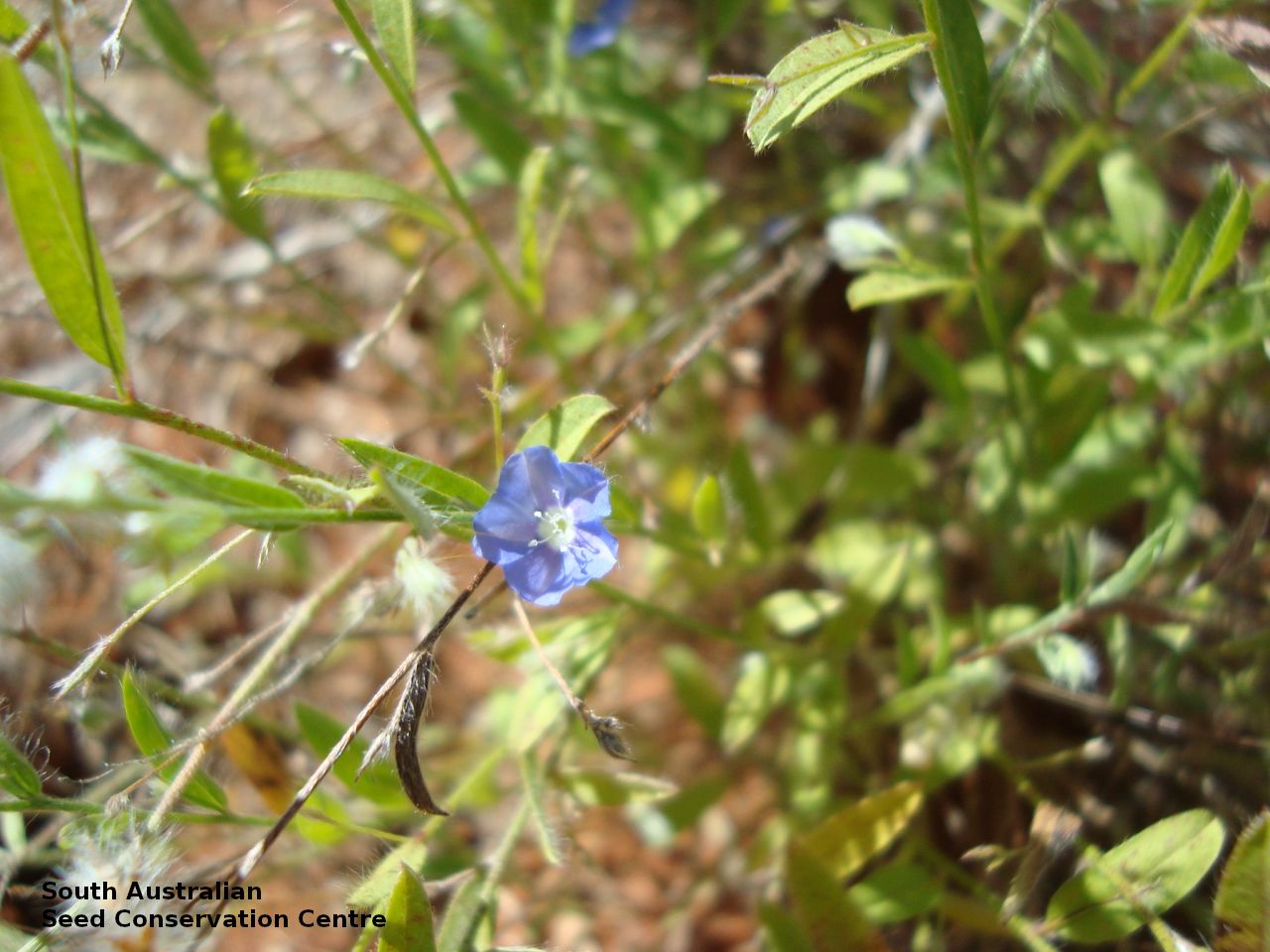
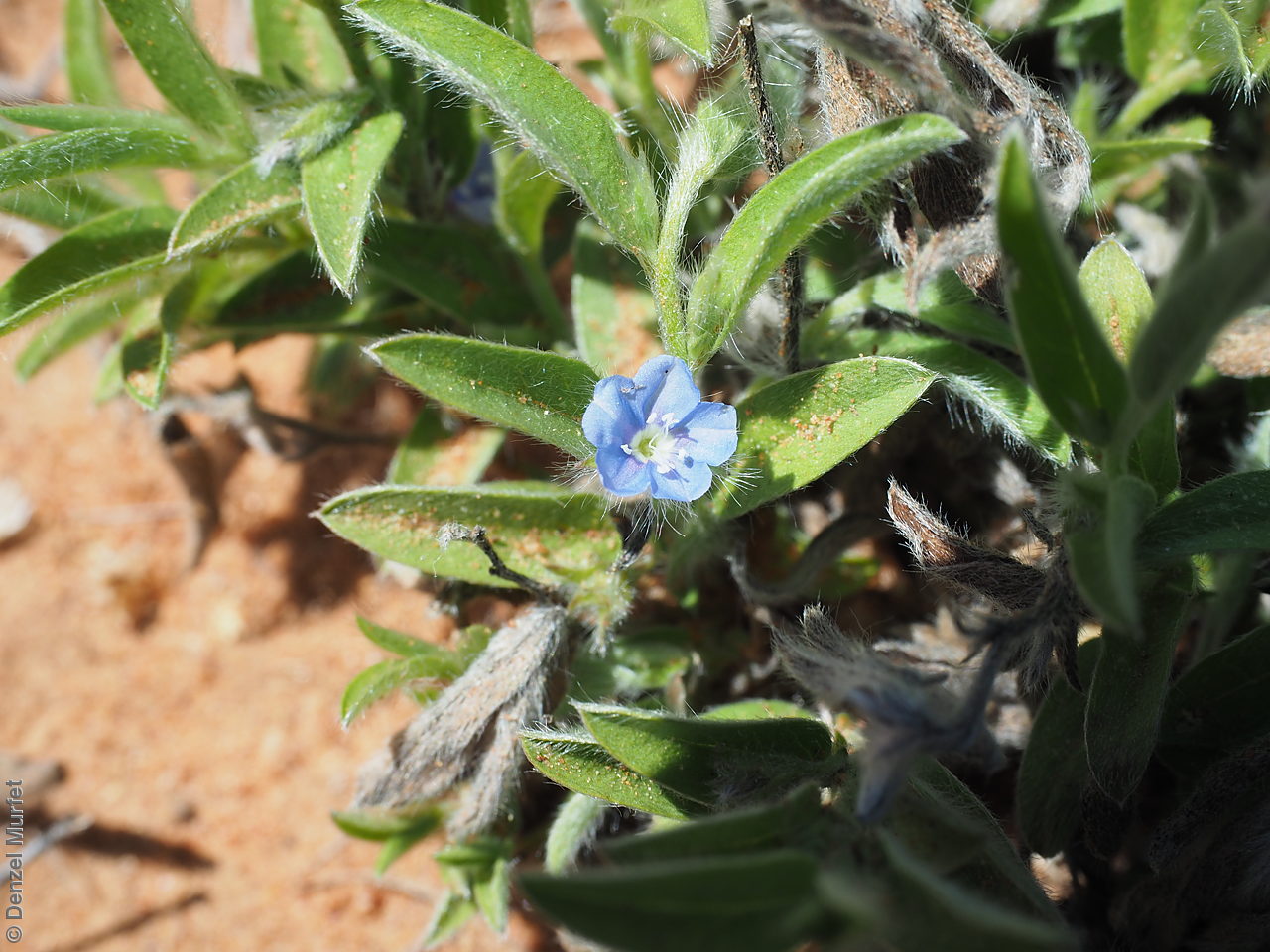
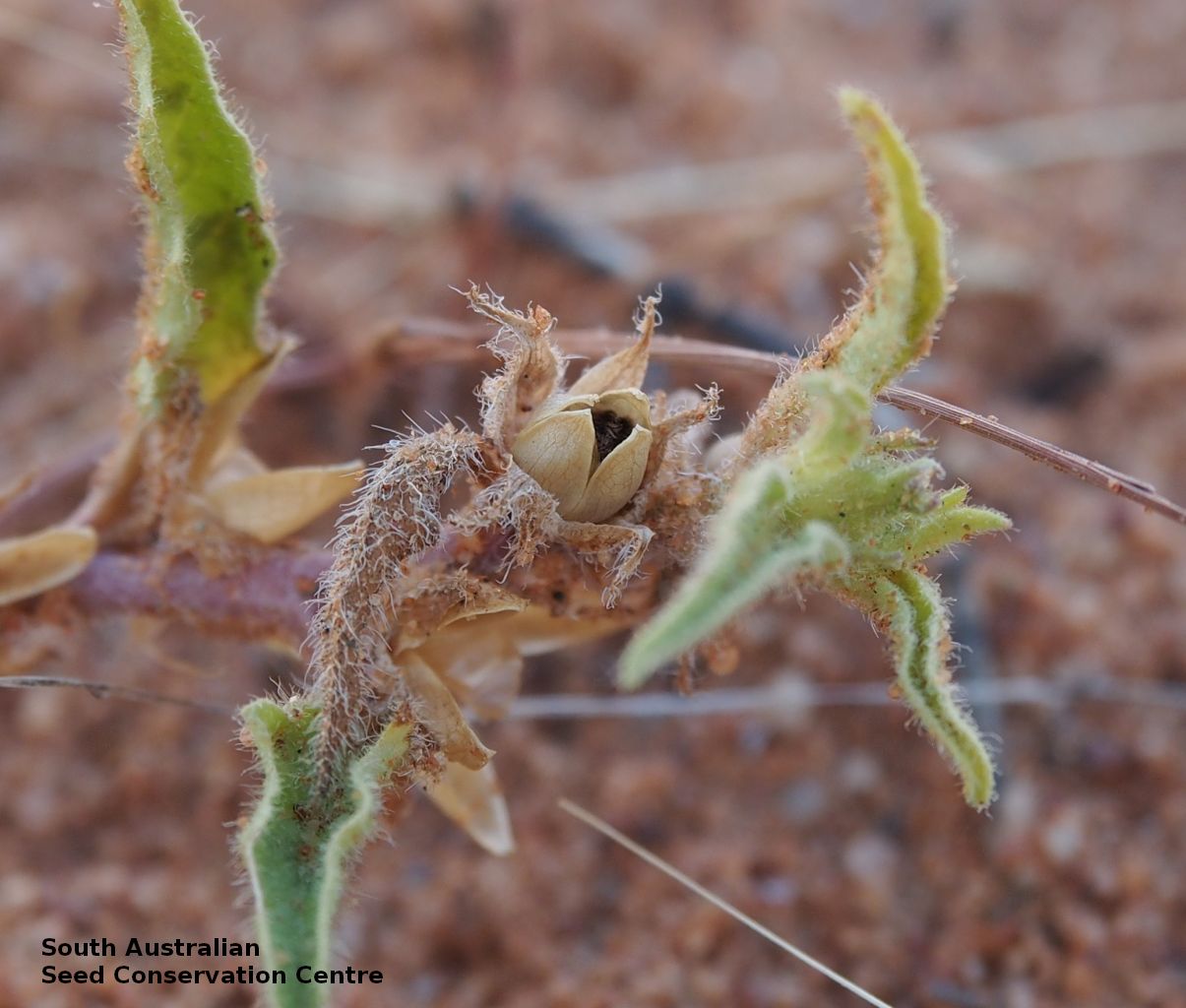
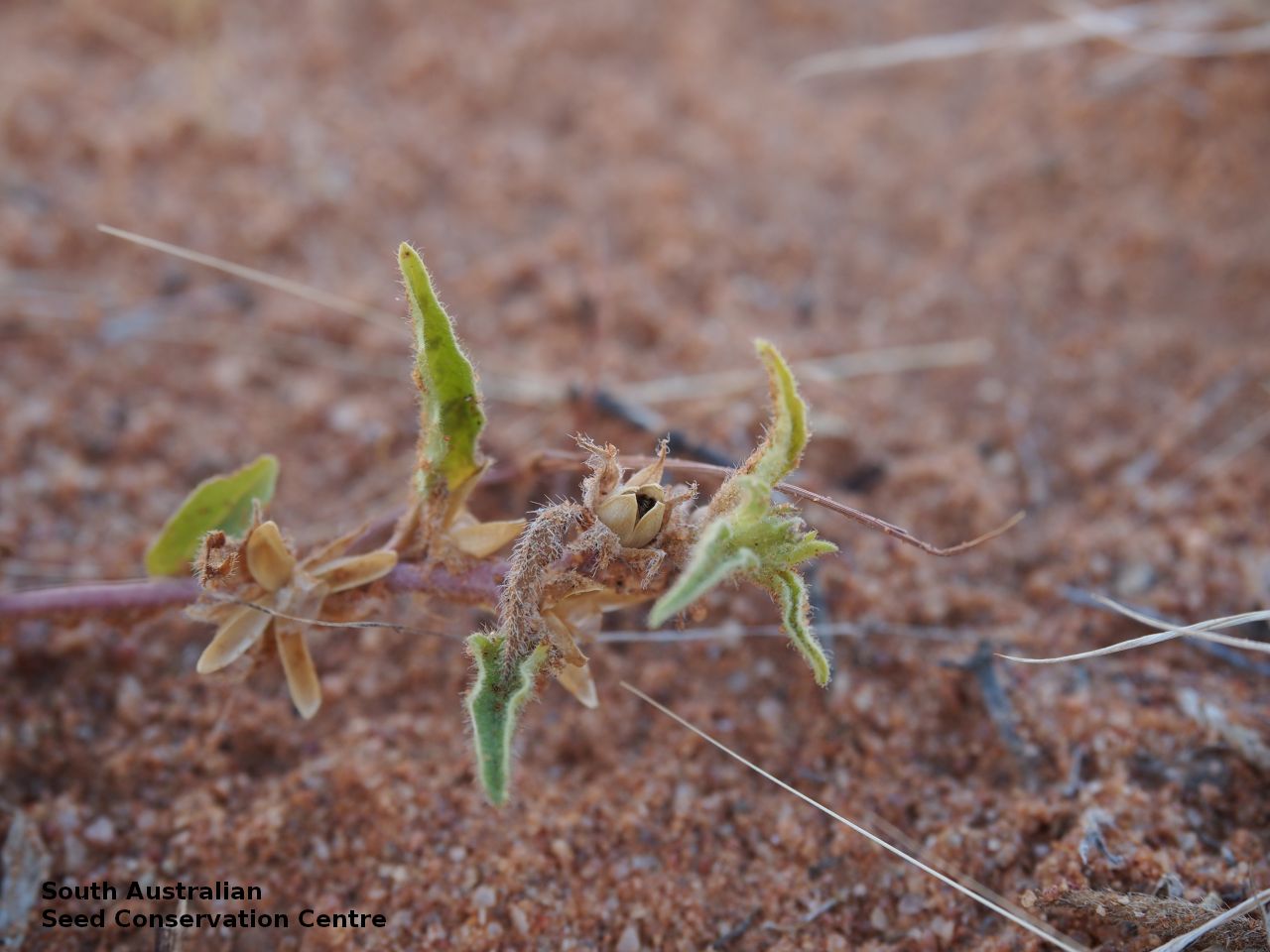
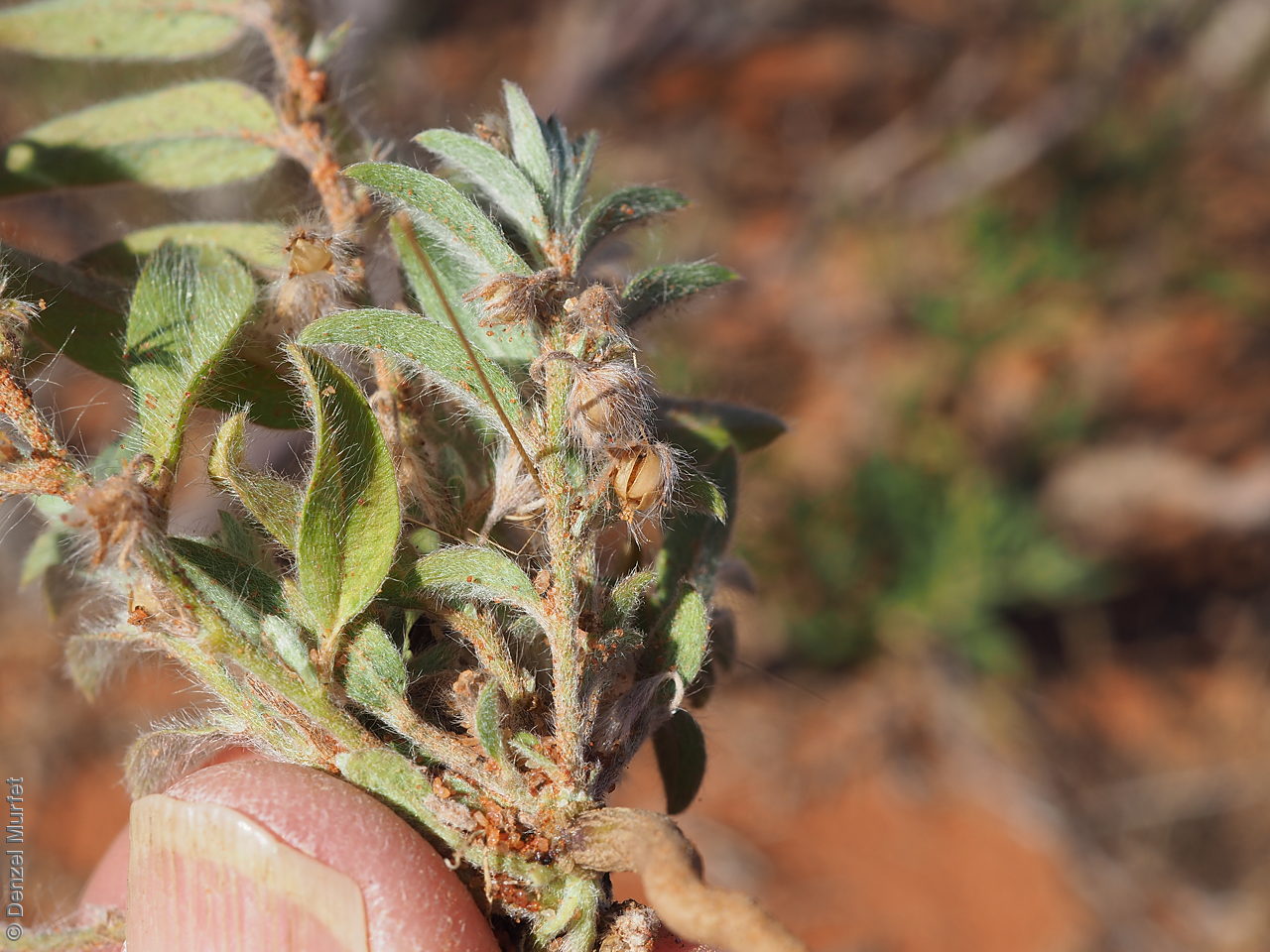
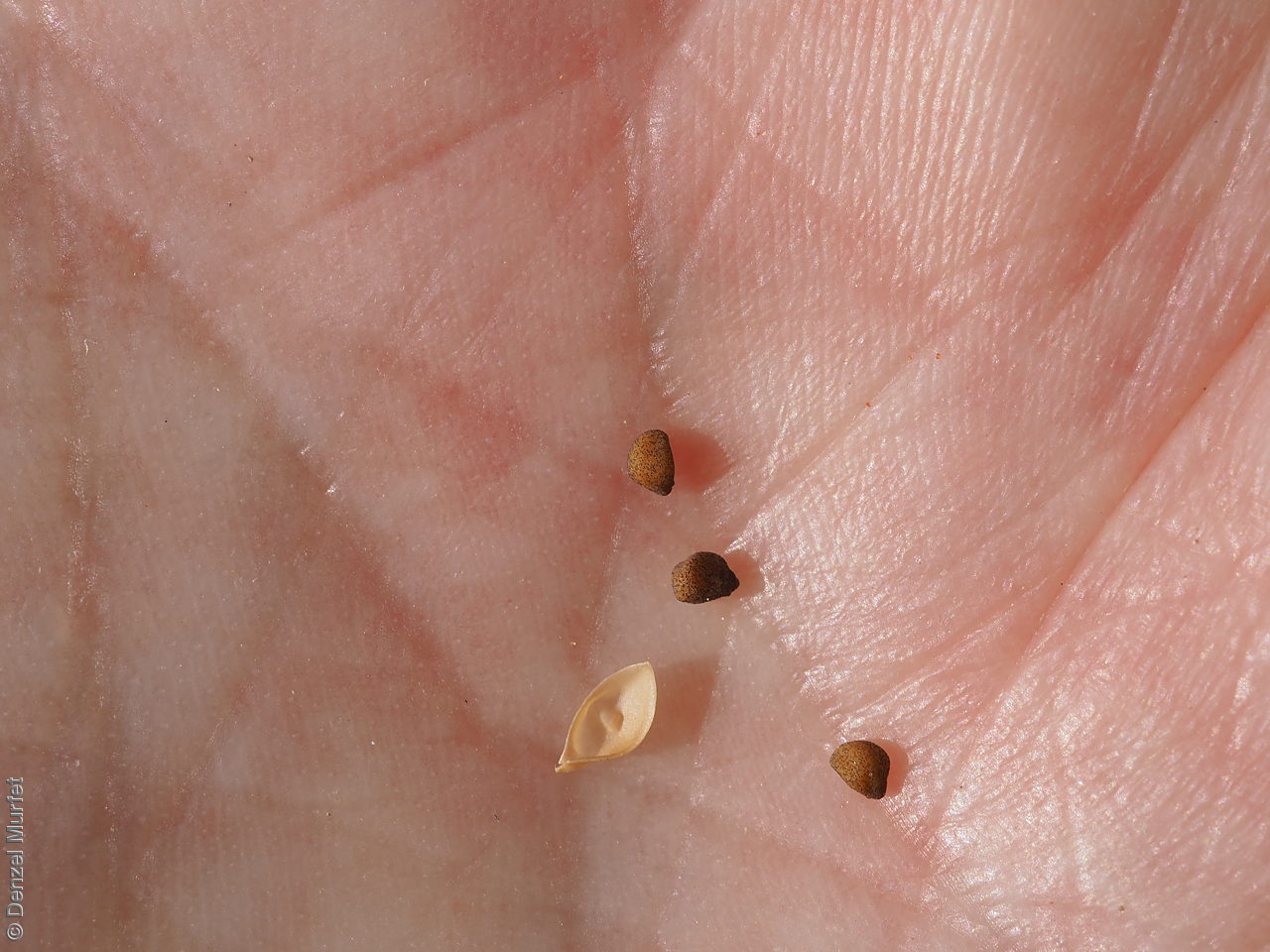
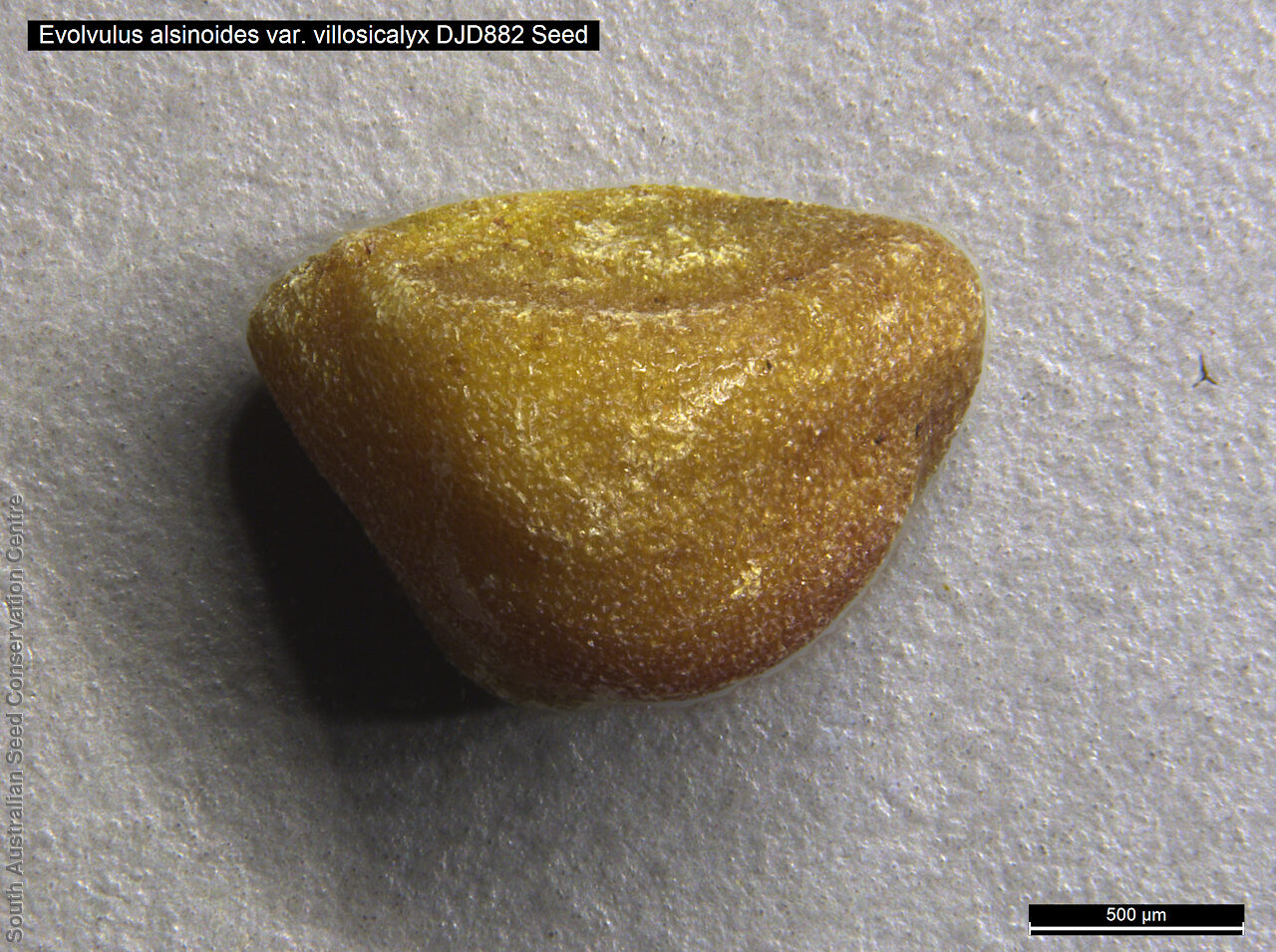
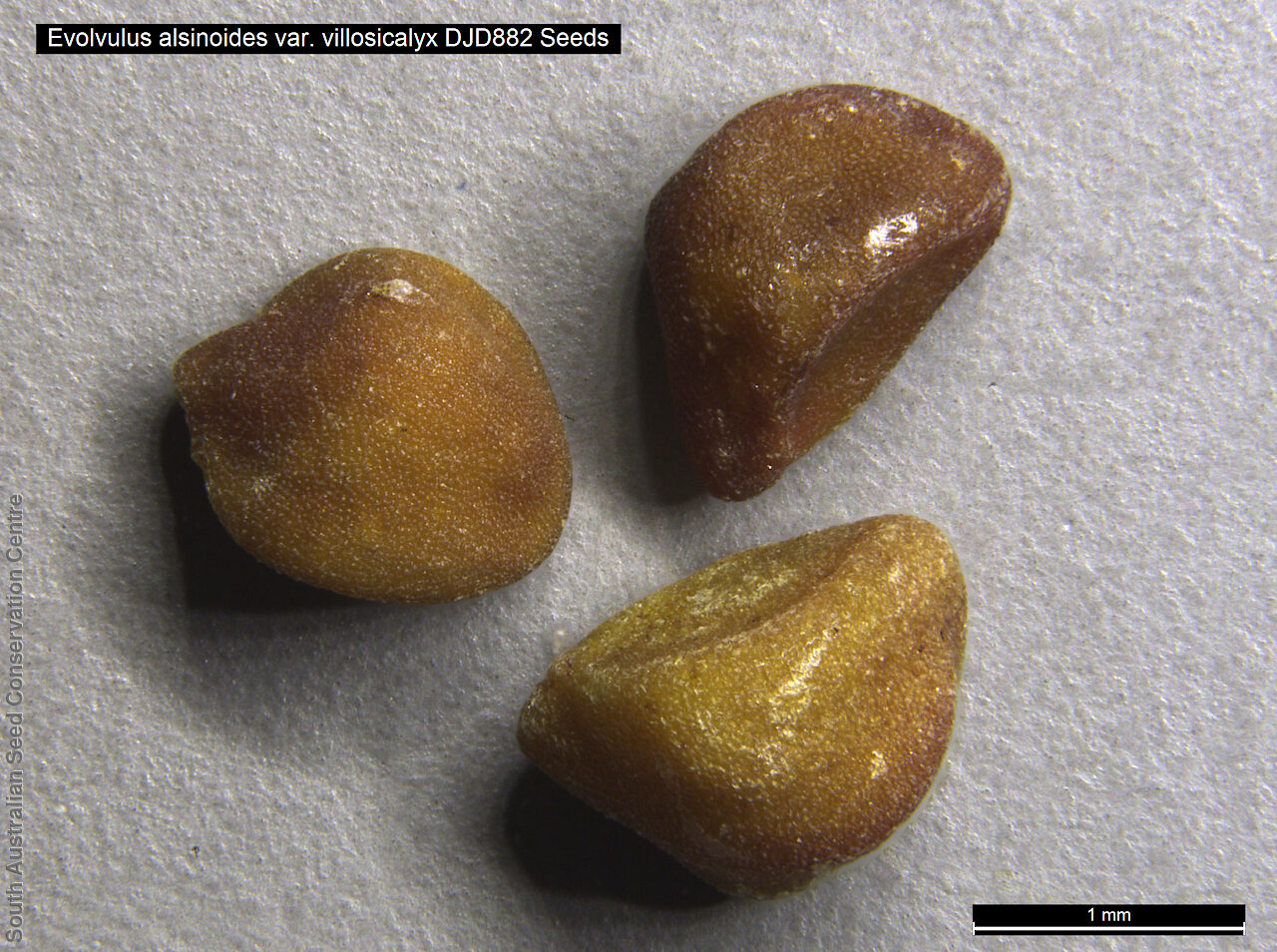

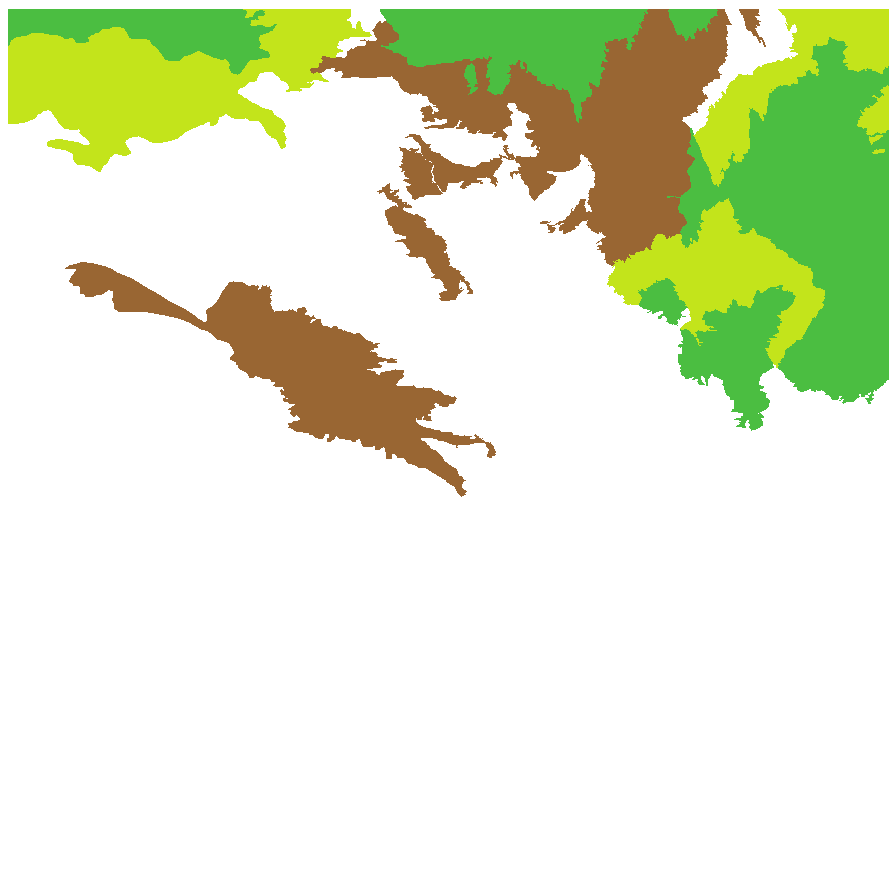
Botanical art
Etymology
Evolvulus from the Latin 'evolvere' meaning to unroll; referring to their non-twining habit. Alsinoides means resembling a species of the genus Alsine. Villosicalyx from the Latin 'villus' meaning shaggy hair and from the Greek 'kalyx' meaning cup-shaped; referring to the species hairy sepals.
Distribution and status
Found in the northern part of South Australia, growing on sand, loam and clay in claypans, along drainage lines and dunes. Also found in Western Australia, Northern Territory, Queensland and New South Wales. Native. Common in South Australia. Common in the other states.
Herbarium regions: North Western, Lake Eyre, Gairdner-Torrens, Flinders Ranges, Eastern
NRM regions: Alinytjara Wilurara, South Australian Arid Lands
AVH map: SA distribution map (external link)
Plant description
Perennial herbs or subshrubs with ascending or prostrate hairy stems. Leaves entire, hairy. Inflorescence axillary with a single blue/white funnel-shaped flower. Flowering throughout the year but mainly between March and August. Evolvulus alsinoides var. villosicalyx differ from the other variety E. alsinoides var. decumbens by having the peduncles shorter than or rarely equalling the leaves (much longer than the leaves in var. decumbens), pedicels 1�4 mm long (2�7 mm long in var. decumbens) and sepals 4�5 mm long, densely hairy, hairs spreading (2�3mm long, sparsely to densely hairy, hairs appressed to spreading in var. decumbens). Fruits are brown globular capsule with hairy sepals, splitting into 4 valves. Seeds are orange to brown sectoroid seed to 1.5 mm long and 1.2 mm wide, glabrous. Seed embryo type is folded.
Seed collection and propagation
Collect seeds between June and November. Collect capsules that are maturing, turning brown and contain hard seeds inside. Capsules can be opened or unopened and some seed can be collected from the ground under the plant. Place the capsules in a tray and leave to dry for one to two weeks. Then rub the capsules gently by hand or with a rubber bung to dislodge the seeds. Use a sieve to separate the unwanted material. Store the seeds with a desiccant such as dried silica beads or dry rice, in an air tight container in a cool and dry place. From one collection, the seed viability was average, at 65%. This species has physical dormancy that needs to be overcome for the seed to germinate (e.g. nicking the seed coat).
| Location | No. of seeds (weight grams) | Number of plants | Date collected | Collection number Collection location | Date stored | % Viability | Storage temperature |
|---|---|---|---|---|---|---|---|
| BGA | 6,400 (6.48 g) | 50+ | 29-Sep-2007 | DJD882 Lake Eyre | 19-Sep-2008 | 65% | -18°C |
Number of plants: This is the number of plants from which the seeds were collected.
Collection location: The Herbarium of South Australia's region name.
% Viability: Percentage of filled healthy seeds determined by a cut test or x-ray.